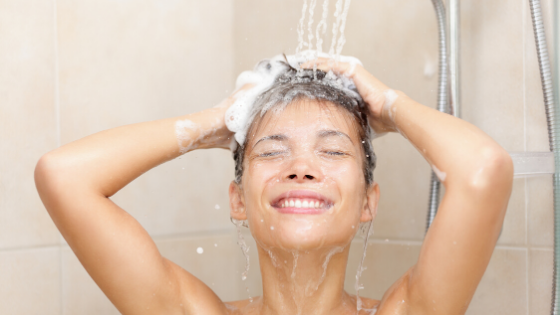If you’re looking for a safer shampoo product, then the list of ingredients to avoid can be pretty long. In this guide, we take a look at 5 ingredients you might want to steer clear of when buying a shampoo:
1. Parabens
Parabens are chemicals used as fragrance and preservative ingredients. They can be found in all manner of cosmetics and personal care products, as well as food.
Why should you avoid parabens?
- parabens mimic oestrogen which means they can act as hormone (endocrine) system disruptors
- parabens have been associated with biochemical or cellular level changes in the body
How to avoid parabens in shampoo
Check product labels for words like Methylparaben, Propylparaben, Ethylparaben, Butylparaben, Isobutylparaben and Isopropylparaben. Looks for shampoo products preserved with food grade ingredients like Sodium Benzoate.
2. Synthetic Fragrances
Synthetic fragrances are scents comprised of man-made ingredients (synthetic materials). The problem with synthetic fragrances is that a single fragrance ingredient can contain up to 200 individual undisclosed chemicals!
Why should you avoid synthetic fragrances?
- studies have found that 95% of chemicals used in synthetic fragrances are created from materials like petroleum and include toxic chemicals linked to cancer, birth defects and allergies
- synthetic fragrances often also include hormone disruptors
How to avoid synthetic fragrances in shampoo
Look for shampoos with fragrance ingredients that are plant-based and naturally derived, for example, Lemon Myrtle Essential Oil. You can also choose certified organic products or fragrance free products. NOTE: Both natural/organic brands and non-natural brands often use the words 'Fragrance' or 'Parfum' on their ingredient labels. The difference is that with natural and organic brands, products are usually scented with essential oils instead of man-made chemicals. When it comes to the word 'Parfum', many natural and organic brands use this word to describe a preservative ingredient known as Natacide®. Natacide® is a proprietary name and is not allowed to be used on labels. It must be called 'Parfum', 'Fragrance' or 'Natural Fragrance' on labels. It has a subtle Vanilla and Almond aroma which is not necessarily noticeable, depending on the other ingredients included in the formula. Products with Natacide® are still allowed to be labelled as 'fragrance free' because it is primarily classified as a preservative ingredient.

Image source: Canva
3. Sulphates (Sulfates)
Sulphates are surfactants (cleansing agents). They are found in many diverse personal care products and are often responsible for creating foam.
Why should you avoid sulphates?
- sulphates are corrosive in nature and can strip our skin’s protective barrier
- sulphates have been associated with contact dermatitis
- some studies have hinted at a link between sulphates and hormone disruption and even cancer
How to avoid sulphates in shampoo
Check labels for ingredients like Sodium Lauryl Sulfate (SLS), Sodium Laureth Sulfate (SLES), Ammonium Laureth Sulfate. There are over 100 different types of sulphates (also spelt sulfates).
4. Formaldehyde (and formaldehyde releasers)
Formaldehyde is a colourless gas mixed with water and methanol used as a cosmetic biocide, denaturant and preservative. It's a carcinogenic impurity released by a number of cosmetic preservatives. It’s used to preserve biological specimens and in embalming fluids, dyes, plastics and fertilizers. In addition to formaldehyde itself, there are other chemicals, usually preservatives, which slowly release formaldehyde as they decompose in a product's formulation. These chemicals are known as formaldehyde releasers.
Why should you avoid formaldehyde?
- formaldehyde is a known human carcinogen
- formaldehyde is associated with allergic reactions, rashes and immunotoxicity
How to avoid formaldehyde in shampoo
Buy products labelled ‘no formaldehyde’ and look out for preservative ingredients known to release formaldehyde – 'formaldehyde releasers'. These include BHT (Butylated Hydroxytoluene), DMDM Hydantoin, Diazolidinyl Urea, Imidazolidinyl Urea, Quarternium-15, Sodium Hydroxymethylglycinate and more.
5. Propylene Glycol
Propylene Glycol is a small organic alcohol used as a fragrance ingredient, humectant (moisture retaining) and skin conditioning agent.
Why should you avoid propylene glycol?
- propylene glycol is associated with organ system toxicity (non-reproductive)
- propylene glycol is associated with irritation of skin, eyes and lungs
How to avoid propylene glycol in shampoo
Check labels for ingredients like 1,2-Dihydroxypropane, 1,2-Propanediol, 2-Hydroxypropanol, Methylethyl Glycol, Propane-1,2-Diol. An easy way to avoid these ingredients in your shampoo is to choose shampoo products made with only natural and organic ingredients.

